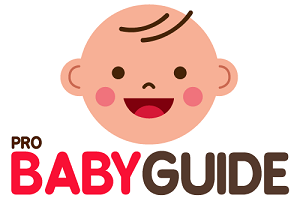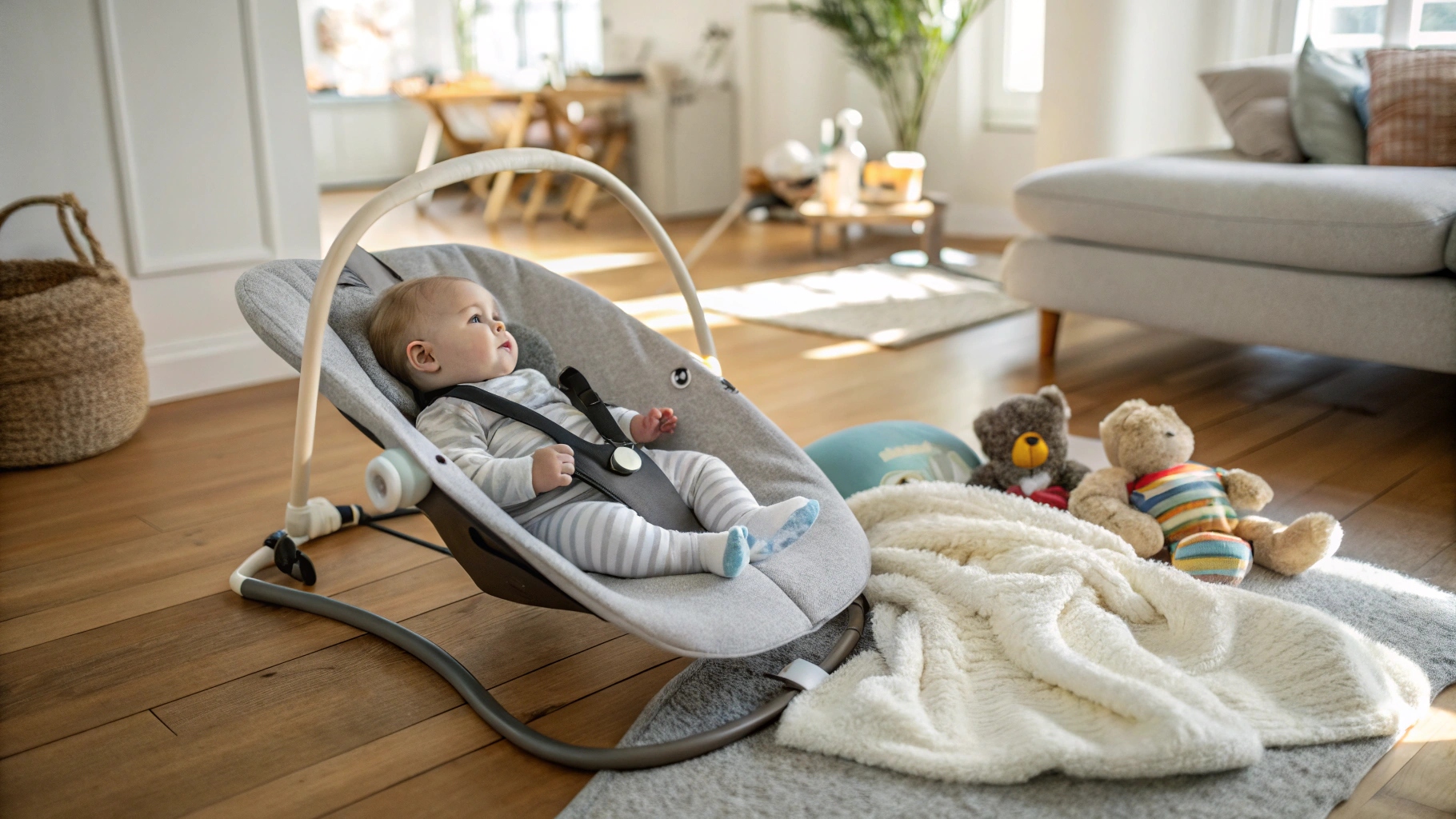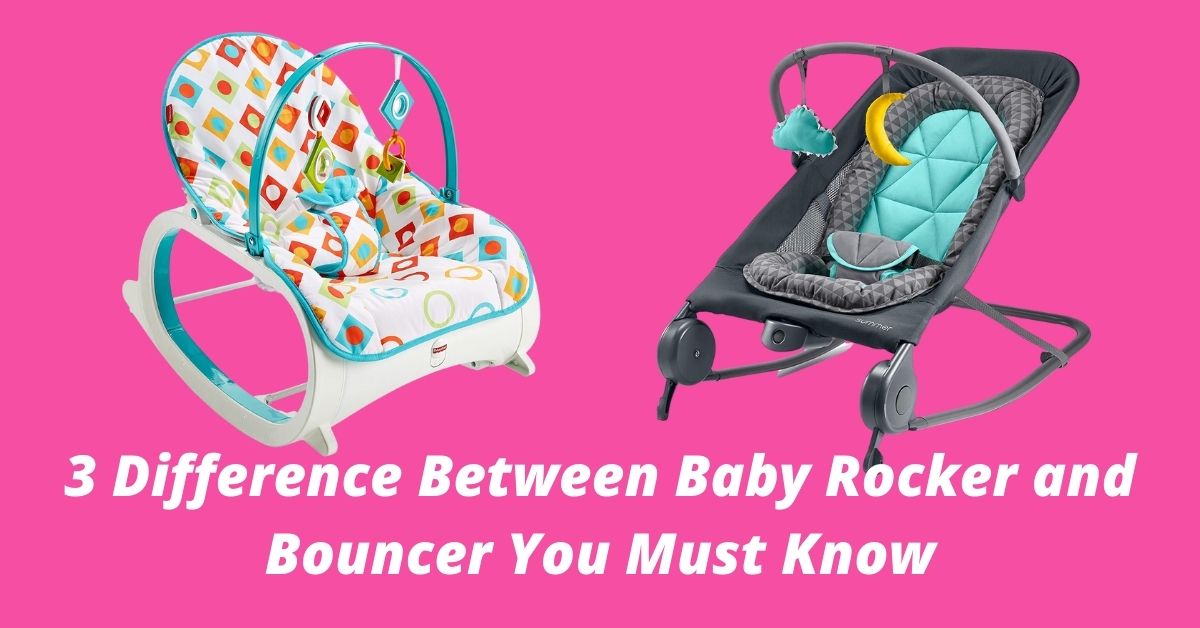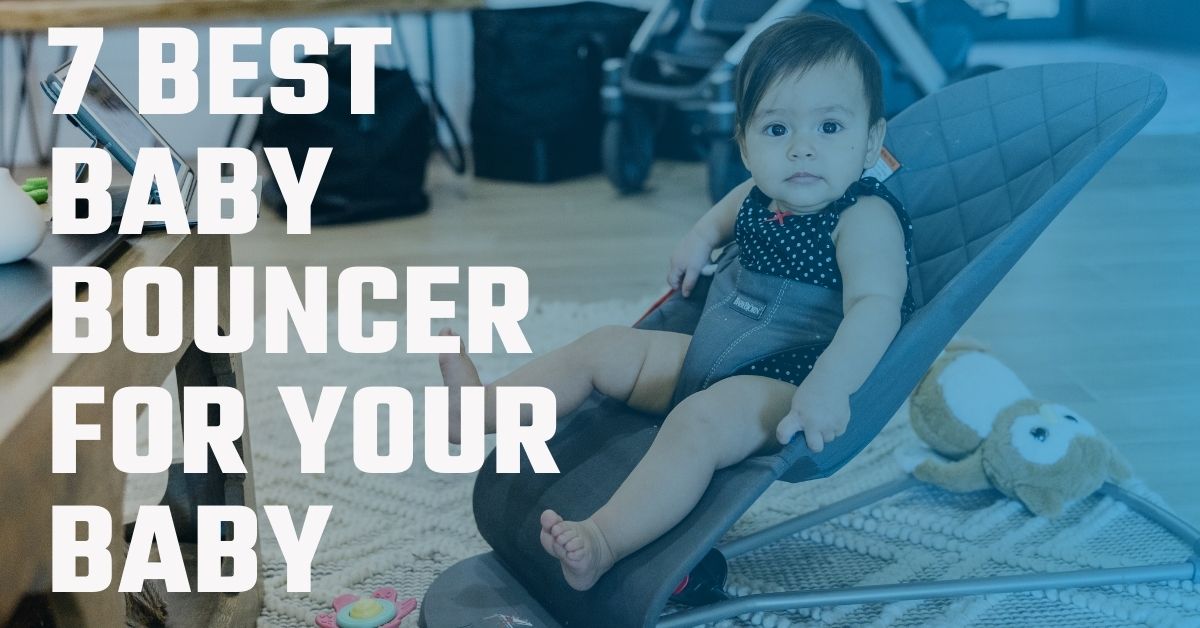The rhythmic bounce of a baby in a colorful, fabric-covered seat – the image is almost synonymous with early parenthood. Baby bouncers promise a moment of respite for weary parents, a source of entertainment for curious infants, and a seemingly harmless way to develop motor skills. But amidst the allure of convenience and calm, a crucial question lingers: Do pediatricians truly recommend baby bouncers?
This article delves deep into the world of baby bouncers, dissecting their potential benefits and risks, exploring the latest medical advice, and addressing the common concerns of parents. We’ll navigate the complexities of infant development, analyze the safety guidelines, and ultimately provide a comprehensive overview to help you make informed decisions for your little one.
Understanding the Appeal of Baby Bouncers
The allure of a baby bouncer is undeniable. For parents, it offers a temporary reprieve, allowing them to complete essential tasks while keeping their baby engaged and entertained. The gentle bouncing motion, often accompanied by stimulating toys and sounds, can soothe fussy infants and provide a novel sensory experience. For babies, the bouncer offers a new perspective on their surroundings, fostering curiosity and exploration.
Furthermore, some parents believe that bouncers can aid in the development of motor skills, particularly leg strength and coordination. The act of kicking and pushing against the floor to create the bouncing motion seems like a natural way to exercise developing muscles. The perceived benefits extend to promoting independence and self-soothing, as babies learn to control their movements and find comfort in the rhythmic motion.
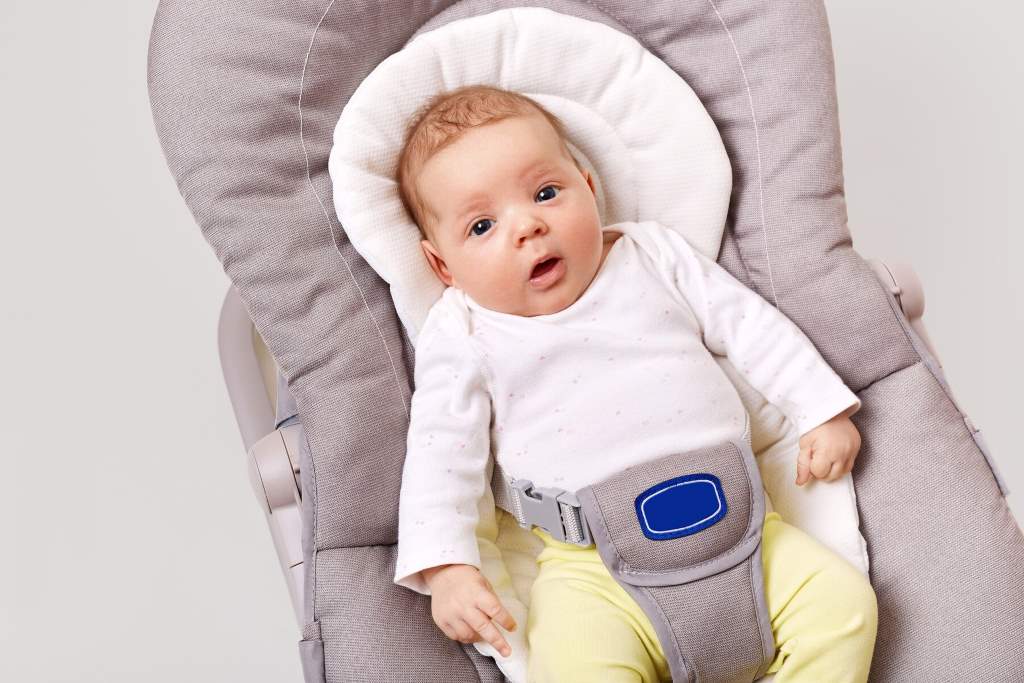
The Pediatrician’s Perspective: Balancing Benefits and Risks
While the appeal is clear, pediatricians approach baby bouncers with a nuanced perspective, emphasizing the importance of moderation and safety. The American Academy of Pediatrics (AAP) and other leading medical organizations do not outright ban baby bouncers, but they strongly advocate for their use within specific guidelines.
Key Concerns and Safety Considerations:
- Limited Floor Time and Motor Development: One of the primary concerns is that excessive use of baby bouncers can limit crucial floor time, which is essential for developing fundamental motor skills like rolling, crawling, and sitting. Floor time allows babies to explore their bodies and environment freely, fostering natural muscle development and coordination. Prolonged confinement in a bouncer can hinder this process, potentially delaying developmental milestones.
- Hip Dysplasia: In infants with underlying hip instability or developmental dysplasia of the hip (DDH), prolonged use of bouncers can exacerbate the condition. The constrained position in a bouncer can place undue stress on the hip joints, potentially hindering proper development. Pediatricians recommend that babies with risk factors for DDH undergo hip screening and avoid prolonged use of devices that restrict hip movement.
- Head Injuries and Falls: While designed for stability, bouncers can tip over if placed on uneven surfaces or if the baby leans too far to one side. Falls from bouncers can result in head injuries, especially in young infants with fragile skulls. It is crucial to always supervise babies in bouncers and ensure they are placed on a flat, stable surface.
Recommended Guidelines for Safe Bouncer Use:
- Age and Weight Limits: Always adhere to the manufacturer’s age and weight recommendations. Most bouncers are designed for infants who can hold their heads up unassisted, typically around 4-6 months of age.
- Limited Duration: Pediatricians recommend limiting bouncer use to short periods, no more than 15-20 minutes at a time, and avoiding prolonged use throughout the day.
- Supervision: Never leave a baby unattended in a bouncer. Constant supervision is essential to prevent falls and injuries.
- Proper Positioning: Ensure the baby is properly positioned in the bouncer, with their back supported and their feet flat on the floor. Avoid using pillows or blankets to prop up the baby, as this can create a suffocation hazard.
- Floor Time First: Prioritize floor time for motor development. Bouncers should complement, not replace, floor time.
- Regular Breaks: Take frequent breaks from the bouncer to allow the baby to move freely and explore their surroundings.
- Avoid Using as a Sleep Device: Bouncers are not intended for sleep. Never allow a baby to fall asleep in a bouncer.
People Also Ask (FAQs):
Q: Are baby bouncers bad for babies’ backs?
A: When used correctly and for short periods, baby bouncers are not inherently bad for babies’ backs. However, prolonged use can strain developing muscles and potentially contribute to poor posture. It’s important to ensure the baby is properly positioned with their back supported and to limit the duration of use.
Q: When can a baby start using a bouncer?
A: Most manufacturers recommend using bouncers for babies who can hold their heads up unassisted, typically around 4-6 months of age. Always check the manufacturer’s recommendations for specific age and weight limits.
Q: Can a baby bouncer help with colic?
A: The gentle bouncing motion of a bouncer can soothe some colicky babies. However, it’s not a guaranteed solution, and it’s essential to address the underlying causes of colic with your pediatrician.
Q: Are there any alternatives to baby bouncers?
A: Yes, several alternatives can provide similar benefits without the potential risks. These include:
- Play mats and activity gyms: These encourage floor time and promote motor development.
- Exersaucers/Activity Centers: These are different than bouncers, and allow for a baby to stand, and use their legs, while being contained.
- Tummy time: This strengthens neck and core muscles.
- Baby carriers: These provide close contact and allow for movement while keeping the baby secure.
- Swings: These can provide a calming motion for fussy babies.
Q: Can a baby sleep in a bouncer?
A: No, baby bouncers are not intended for sleep. Allowing a baby to sleep in a bouncer can increase the risk of suffocation and other sleep-related hazards.
Q: Are jump bouncers the same as baby bouncers?
A: No. Jump bouncers, also known as doorway jumpers, are different from standard baby bouncers. They suspend the baby in a harness and allow them to jump and bounce. Jump bouncers carry additional risks, including falls, hip dysplasia, and potential damage to door frames. Pediatricians generally advise against using jump bouncers.
Conclusion: Informed Choices for Healthy Development
Baby bouncers can be a useful tool for parents seeking a moment of respite and a source of entertainment for their infants. However, it’s crucial to approach their use with caution and adhere to recommended safety guidelines. Prioritizing floor time, limiting bouncer use, and always supervising your baby are essential for promoting healthy development and minimizing potential risks.
Ultimately, the decision to use a baby bouncer is a personal one. By understanding the potential benefits and risks, consulting with your pediatrician, and making informed choices, you can ensure your baby’s safety and well-being while navigating the joys and challenges of early parenthood. Remember that every baby is unique, and their developmental needs may vary. Always observe your baby’s cues and adjust your approach accordingly.
